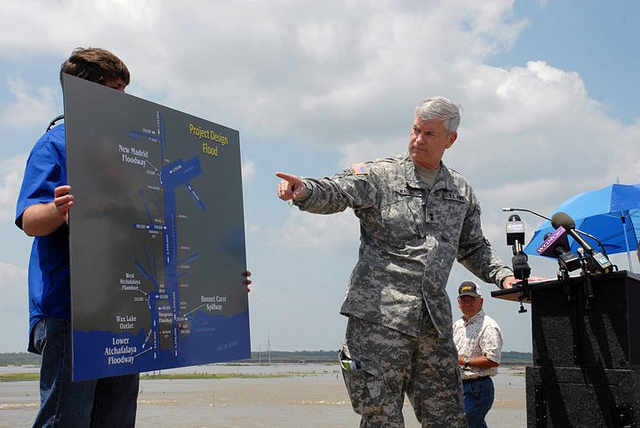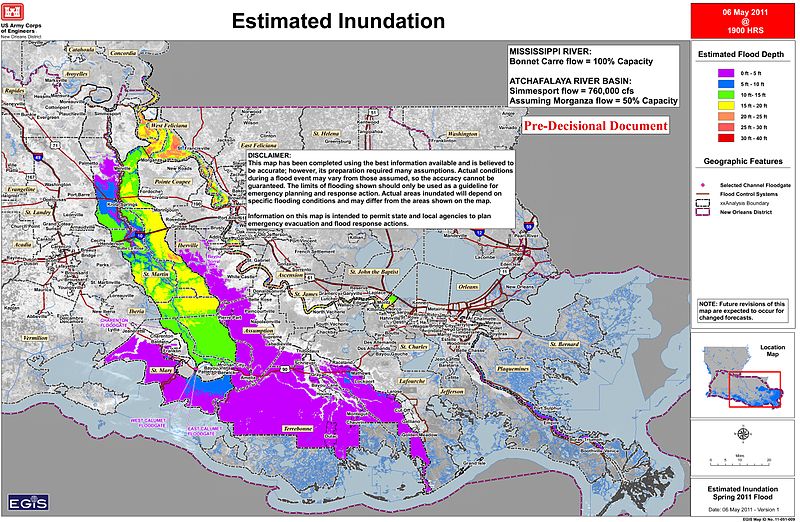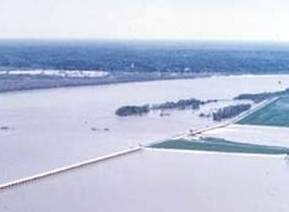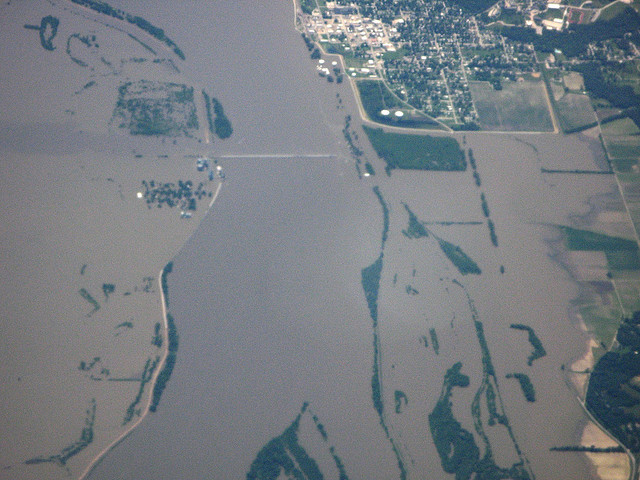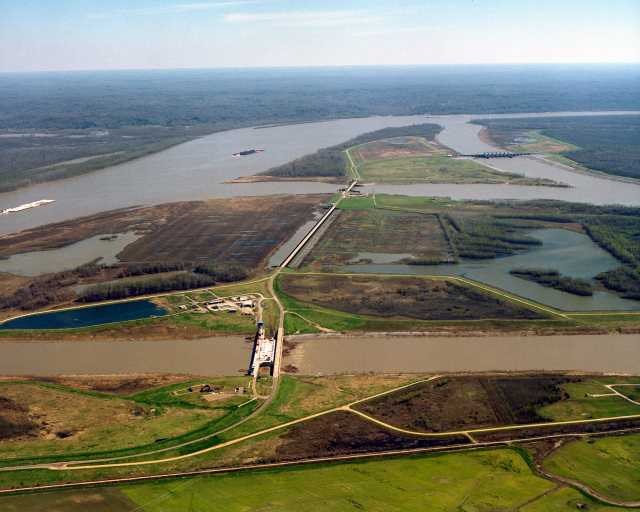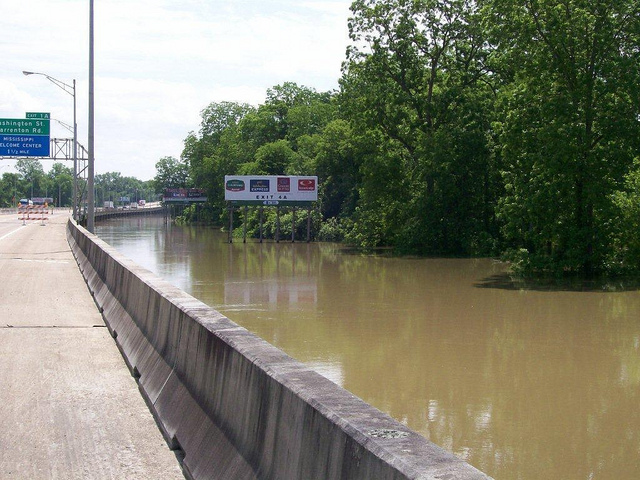
The Mississippi River lapped briefly at the edge of Interstate 20 in Vicksburg, Mississippi, and then receded. This time. (US Forest Service photo)
The historic Mississippi River flood of 2011 (or at least, of this far in 2011) is slowly receding now, and the catastrophic failure of the Old River Control Structures, that could have brought the US economy to its knees did not happen. What are we to make of this? But let us ask a different question first: instead of analyzing what did not happen, what are we to make of what did happen? Continue reading
